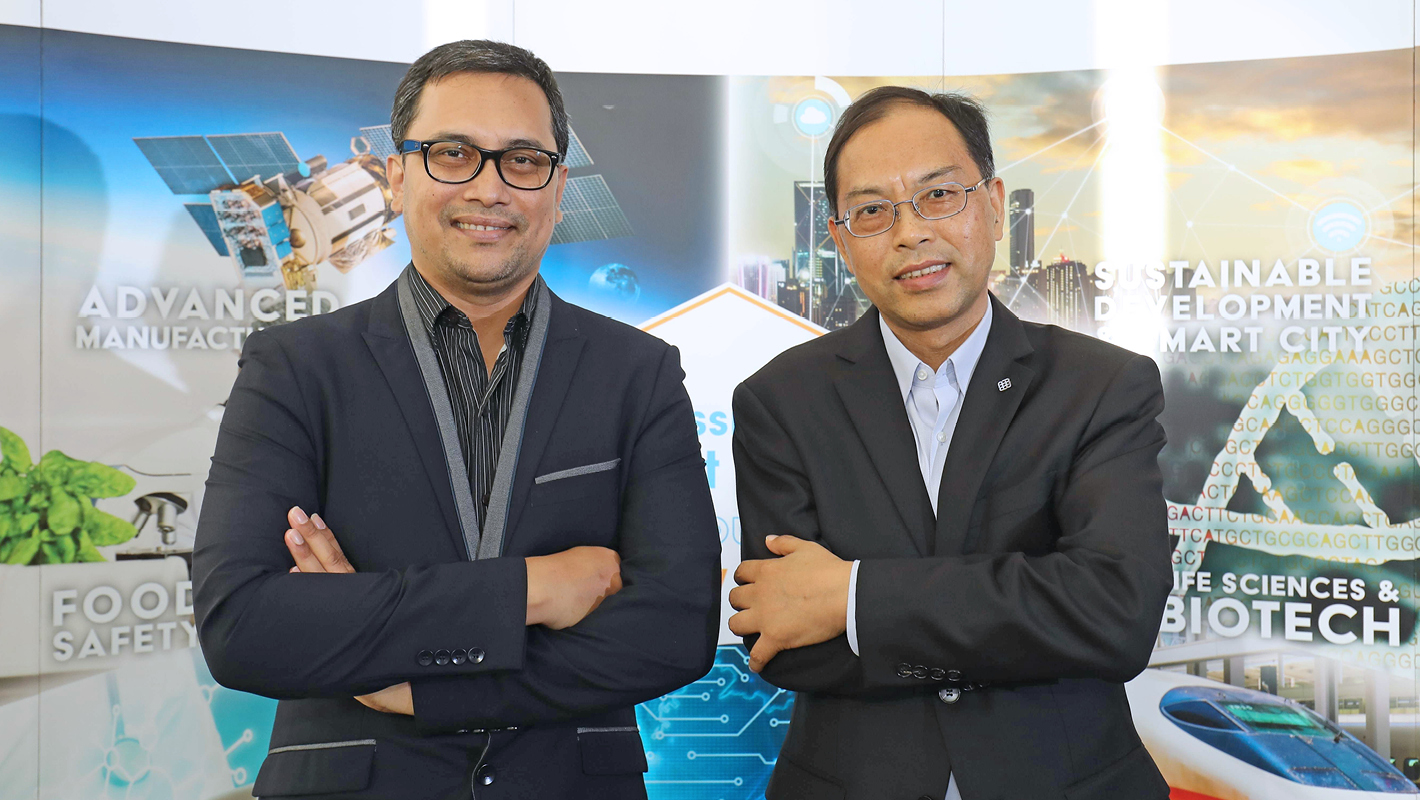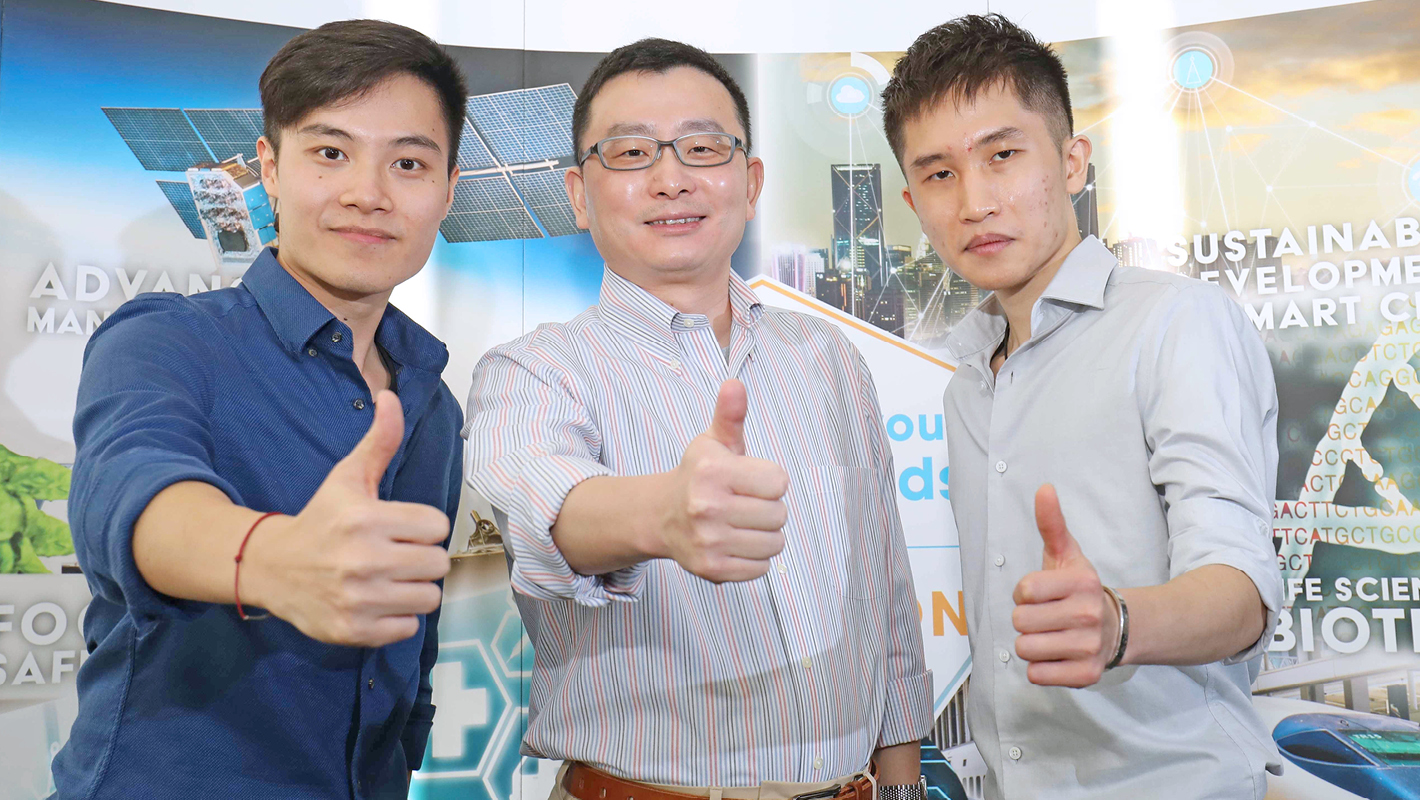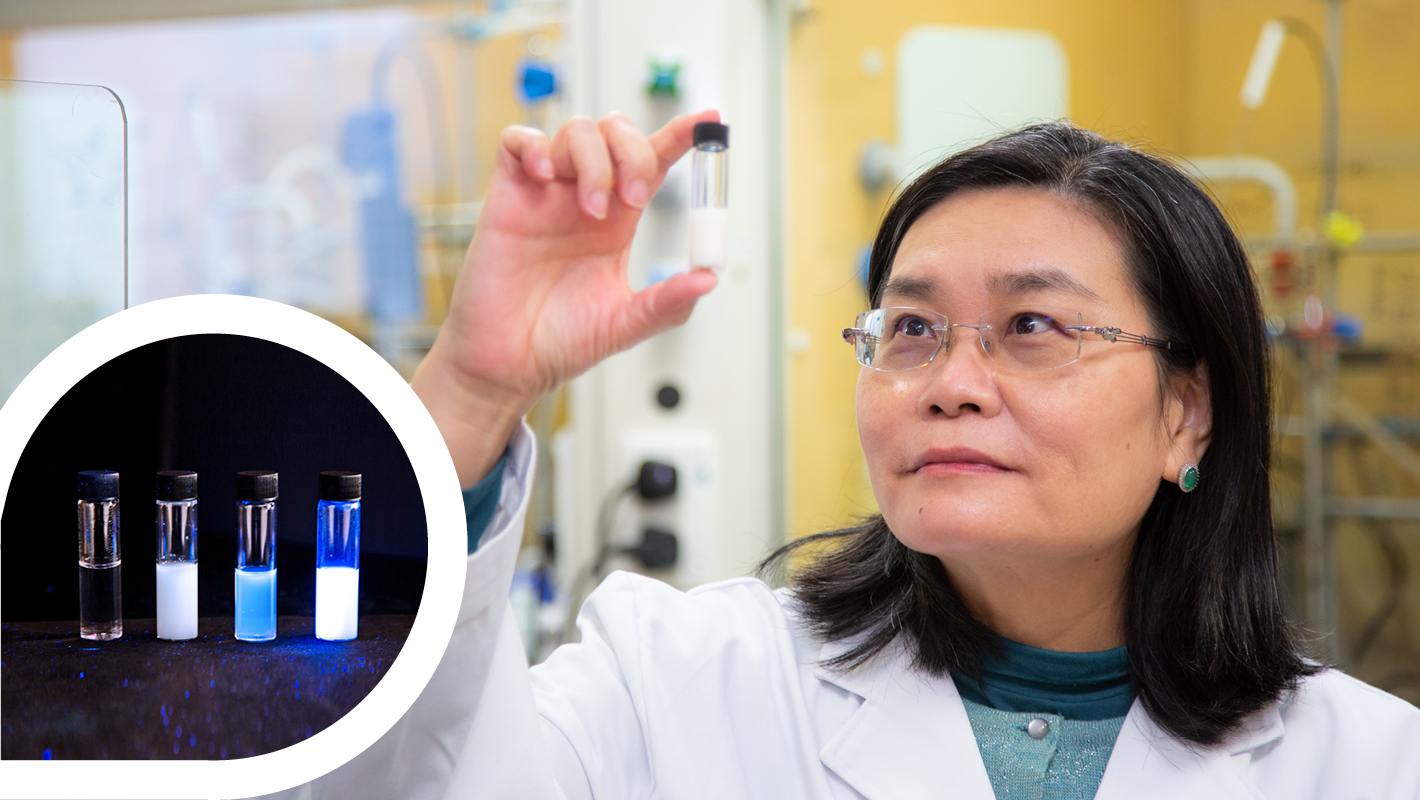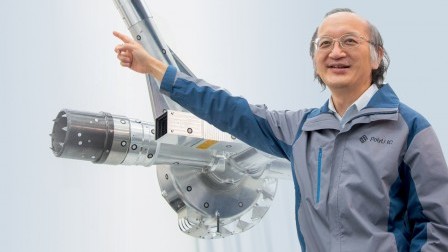PolyU’s research brings changes to healthcare and medical services
Three PolyU medical innovations have won Global Innovation Awards at the TechConnect Business Virtual Summit and Showcase 2020. The PolyUStimulator is the first battery-free device that can achieve the same neurostimulation outcomes as a conventional electrically-powered one. An AI-based risk assessment system for knee osteoarthritis can aid clinical practitioners in creating personalised treatment plans. A new type of nanoparticle that becomes fluorescent when exposed to UV light can improve the treatment of diseases, such as liver cancer and diabetes. These advances in research have great potential to benefit patients.
PolyUStimulator – A powerful new medical tool (batteries not included)
For patients who have suffered a neurological injury, such as spinal cord damage or chronic pain, neurostimulator implants offer the hope of regaining lost mobility or pain relief without medicine. But despite their benefits, these electrically-powered devices still have some limitations.
Most existing implantable neurostimulators rely on internal battery packs to power their operation and, therefore, have a relatively short lifespan. Additionally, the neurostimulators have to be implanted through a surgical procedure. Even more alarming, their batteries could potentially leak inside the body.
These drawbacks could soon be overcome, thanks to the work of two PolyU researchers — Dr Monzurul Alam, Research Assistant Professor, and Professor Zheng Yongping, Henry G. Leong Professor in Biomedical Engineering — both from the Department of Biomedical Engineering. They have come up with a different kind of implant which they call the PolyUStimulator. As they explain, the name was coined by combining the ‘U’ in PolyU with the ‘S’ in Stimulator to represent the harvest of ultrasound energy to drive the new device.
Small, safe and simple
The PolyUStimulator transmits ultrasound energy into the body through the skin and converts it into a piezoelectric stimulation current through a tiny implanted device that operates without wires or the need for an internal battery. Once the device is implanted inside the body, it provides electrical stimulation when an ultrasound source is applied to the skin’s surface.
“It is a very simple device,” Professor Zheng says. “The energy harvested from ultrasound is an alternating current, which is converted by the device into a pulsed current suitable for electrical neurostimulation. The beauty is that we can make the device very small — tiny enough to be injectable, thus avoiding surgery.”
.jpg)
The PolyUStimulator can be as small as 1 mm in diameter, tiny enough to be safely injected under the skin.
The advantages of ultrasound are that it can reach deep inside the body where conventional inductive energy cannot safely reach, and is safe from radio frequency interference. Additionally, the stimulation can be controlled and adjusted by the external ultrasound source and even used across multiple channels through different modules tuned to different ultrasound frequencies. As it is designed to be biocompatible, it could potentially last as long as the patient lives.
Although no human studies have yet been carried out, the efficacy of the stimulator has been demonstrated in animals.
Dr Alam, an expert in spinal cord injuries, says, “We sent energy from outside the animal’s body to the implant connected to the muscles. When the electrical charge sent a pulse to the muscle, the muscle contracted causing the leg to move similarly to implanted functional electrical stimulation, an established treatment for the paralyzed.“

Dr Monzurul Alam (left) and Professor Zheng Yongping
Next steps
Although the PolyUStimulator is still in the early stages of development, it has great potential as a therapeutic tool for treating patients who have had a spinal cord injury or who suffer neuropathic pain, as well as healing complex bone fractures.
To further develop their stimulator, Dr Alam and Professor Zheng still need to find appropriate coating materials for fabrication to avoid rejection by the body and the optimal way to fix it in the desired position.
Despite these issues, it has already received recognition in the journal Bioelectronic Medicine, which stated in a commentary that the PolyUStimulator was the first battery-free device that can achieve the same effect for neurostimulation as a conventional electrically powered one.
~~~
AI-based risk assessment system for knee osteoarthritis
Early detection of knee osteoarthritis (KOA) is critical for preventing disease progression and reducing the need for joint replacement surgery. With a view to facilitating the treatment, MPhil students Toby Li and Justin Chan developed a “Time-dependent Machine-Learning-based Prediction System for Progression of Knee Osteoarthritis” under the supervision of Dr Wen Chun-yi, at the Department of Biomedical Engineering.

(From left) Justin Chan, Dr Wen Chun-yi and Toby Li
The AI-based system can predict the risk of KOA progression by analysing medical data, including tabular electronic health records and knee radiographic images. With a precision rate of more than 80%, the prediction system can aid clinical practitioners in performing efficient triage and constructing personalised treatment plans. A mobile application is also being developed to measure and record patients’ relevant physiological data on a regular basis, facilitating continuous tracking and self-management of the disease.
“I hope this AI predictor can become a kind of preventive medicine, and that chronic disease management with AI can expand to other musculoskeletal and ageing-related diseases, such as osteoporosis, Alzheimer’s disease, heart attacks and strokes in the future,” Li says.
~~~
Shedding new light on nanocarriers for drug and gene therapy
Nanocarriers are microscopic nanoparticles that have been developed for bringing drugs or genes to parts of the body that would normally be inaccessible. However, the technology is still being perfected. Delivering drugs to predetermined areas of the body continues to be challenging. Moreover, it can be difficult to trace the movement of the nanocarriers within the body after they are injected into a patient.
The first of these challenges was overcome by Professor Li Pei of PolyU’s Department of Applied Biology and Chemical Technology, when she and her team developed a novel type of amphiphilic core-shell nanocarrier that can efficiently deliver a gene into a cell with great precision.
“It is extremely difficult to carry a gene into a cell, as genes are very delicate molecules that degrade easily,” Professor Li says. “We were able to create a nanocarrier with a two-layer structure that encapsulates the gene in its surface. This protects the gene when it is travelling in the body, and the protective layer is able to open and release the gene inside the cell.”
Professor Li adds that her nanoparticles have demonstrated successful delivery of genes for the treatment of liver cancer and insulin resistance in diabetes.

Professor Li Pei is making inroads in the field of nanocarriers and the treatment of diseases, such as liver cancer.
(Inset) When exposed to UV light, the two tubes of solution on the right containing nanoparticles become fluorescent.
Where do the nanoparticles go?
The second challenge, that of tracking a nanocarrier once it is inside the body, came up during an exhibition in San Francisco a few years ago. At that time, a big pharma company expressed interest in Professor Li's work, but had a concern.“They asked where do these nanoparticles go after they are injected into the body?”
This is an important question as it is critical to know whether the nanoparticles remain in the body during therapeutic treatments or if they are expelled through urine or faeces. The question motivated Professor Li to develop a new type of nanoparticle that becomes fluorescent when exposed to UV light.
This development has opened up a range of new possibilities, including biomedical applications such as bioimaging markers for vitro cell imaging, image-guided therapy, diagnostic imaging and chemo sensors. Other non-medical applications include fluorescent ink for anti-counterfeiting and “smart coatings” that make paint responsive to UV light.
Although further research and development is still required before Professor Li’s photoluminescent nanoparticles can be fully licensed, she remains optimistic about their potential as she was able to obtain a US patent for them in a relatively short period of time.
~~~
Each of the three innovations won a Global Innovation Award at the TechConnect Business Virtual Summit and Showcase 2020. Held in Boston, in the US, TechConnect is the world's largest multi-sector event for fostering the development and commercialisation of innovations. The Global Innovation Awards identifies the top 15% of submitted technologies based on their potential positive impact on a specific industry sector. More than 400 submissions were received in 2020, including those from leading global universities and technology enterprises.








